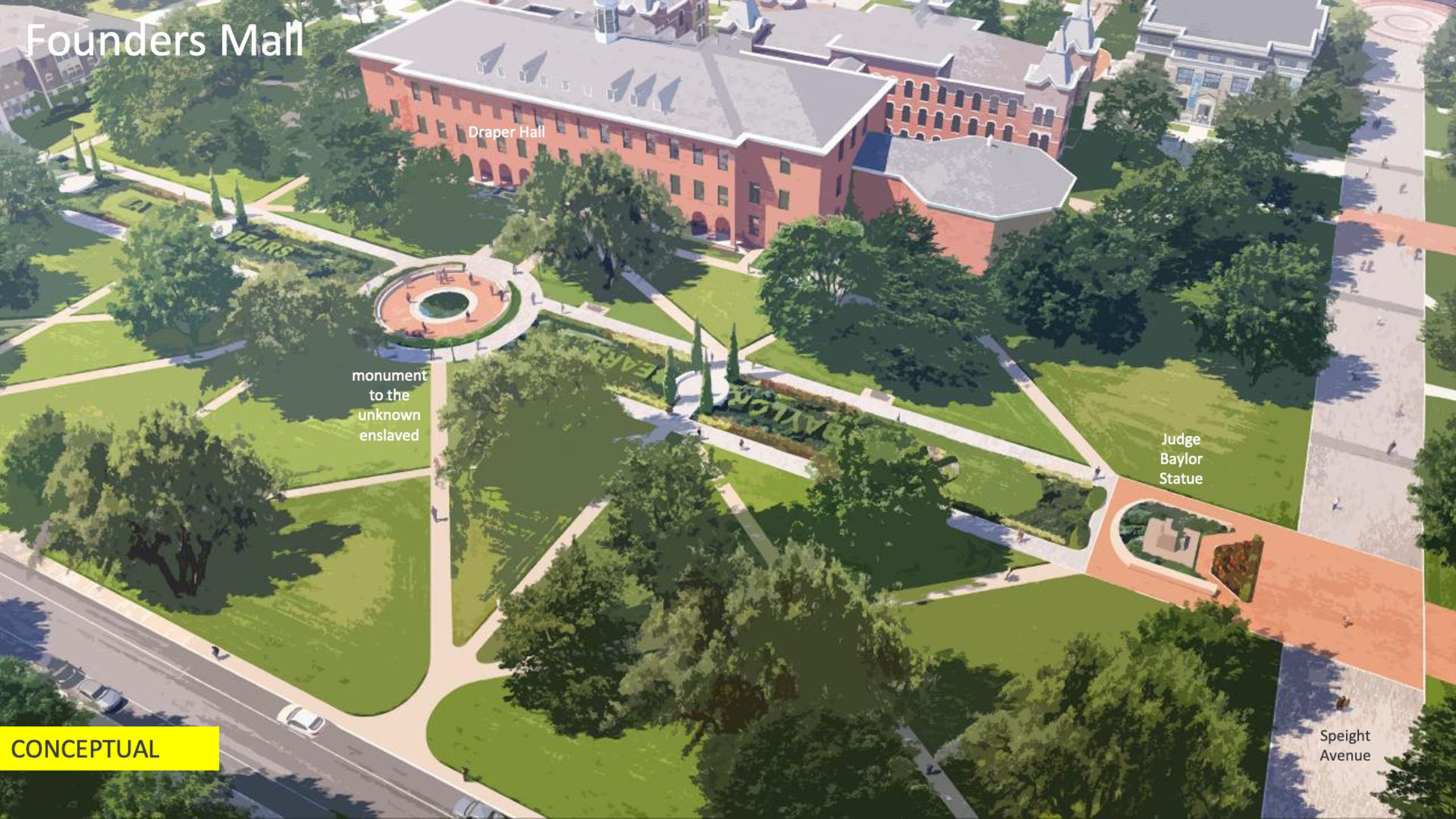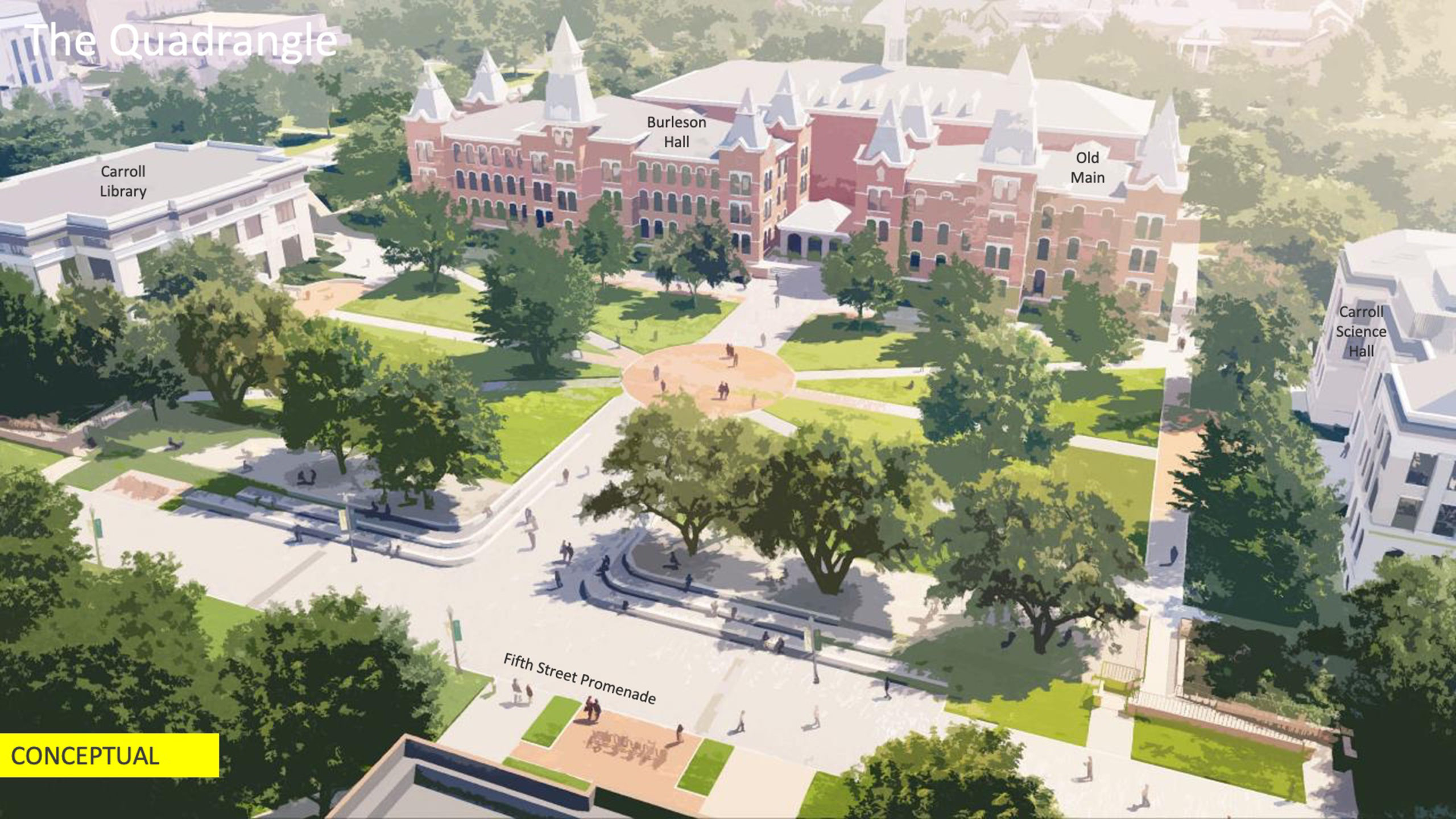Updates to Founders Mall and Quadrangle will more fully tell Baylor’s history
On Friday, Baylor Regents approved the outline of a plan that will address many of the priorities named by the Commission on Historic Campus Representations last year — recommendations that would more fully tell the history of the university and its early leaders.
Many of the details are still in development, but the concepts released were designed to bring light to the historic heart of campus (which has, in many ways, remained untouched for decades), while telling parts of Baylor’s history that were previously untold. (Click on the images above and below to enlarge.)
“Our goal at the outset of this process was not to erase Baylor’s history, but rather to tell the university’s complete story by taking an additive approach as we shine light on the past,” explains Board Chair Mark Rountree (BBA ’86, MTA ’87). “Some of the facts uncovered about the university’s history have indeed been painful, but it is important that we move forward together as the Baylor Family through an intentional process of reckoning, repentance, reconciliation and redemption.”
The bulk of the plan addresses Founders Mall (the area between Pat Neff and Waco Hall) and Burleson Quadrangle. Among the highlights:
- As promised, the Judge Baylor statue will remain in place, with new signage (telling more of both his story and the university’s founding) added to the display as part of an upgrade to the surrounding plaza and landscape.
- An area will be added on Founders Mall recognizing the unknown enslaved people who are connected to Baylor’s founding and original campus. This space will be designed as a place of reflection, with water and light features. (The Centennial Time Capsule currently on Founders Mall will be relocated to another place on campus.)
- Burleson Quadrangle will be renamed simply “The Quadrangle” (a name already widely used on campus), and the Rufus Burleson statue will be moved to a less prominent location nearby (between Georgia Burleson Hall and Draper), as indicated by the Commission. Additional signage will better tell the Burleson family’s history.
- A series of enhancements to the Quad are aimed at making it a more usable and accessible gathering space for students: a larger event plaza in the center, terraced seating along Fifth Street, tables and chairs under the live oaks, better Wi-Fi coverage, a more accessible, connected entry from Fifth Street, etc. (The current Sesquicentennial Walkway bricks will be incorporated into the new design in some way — perhaps relayed, or used in a wall of some kind.)
- The bells that quietly sit on the Quad — which likely were used on slave-labor plantations before being given to the university — will be relocated to Baylor’s original campus in Independence.
- In addition to the previously announced statues of Robert Gilbert and Barbara Walker (Baylor’s first Black graduates), planned for outside Tidwell Bible Building, Speight Avenue will be turned into a pedestrian plaza from Fifth to Eighth Street, similar to the stretch of Fifth Street in front of the Bill Daniel Student Center (SUB) and Quadrangle.
An architectural firm will be selected to turn this framework into firm plans. Work will begin this summer, and continue over the next couple of years.
Sic ’em, Baylor campus!
You might also like:
* Baylor to add statues honoring first Black graduates to campus landscape (April 2021)
* 10 things we’ve learned about slavery/racism & Baylor’s history from the Conversation Series (March 2021)



